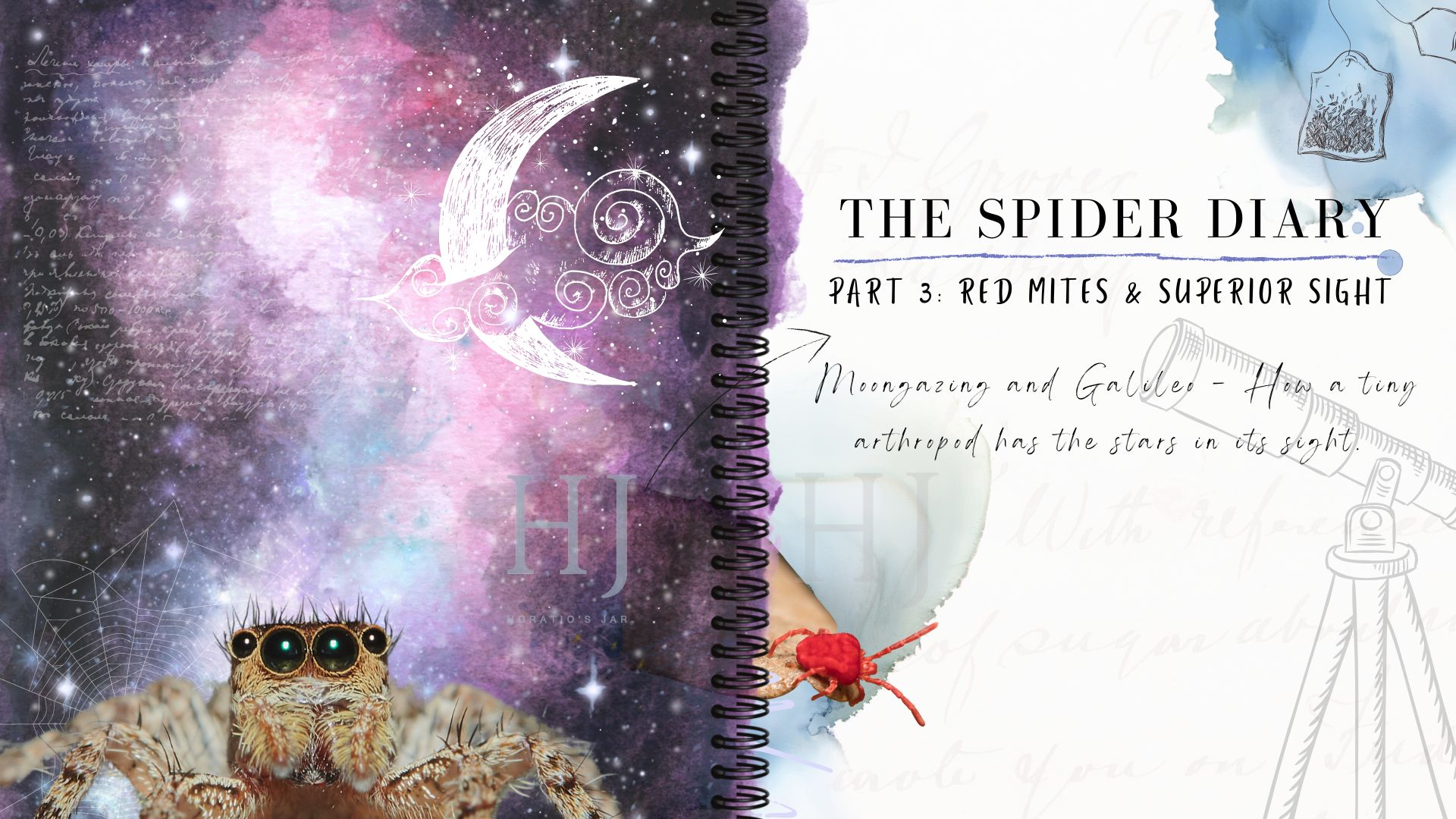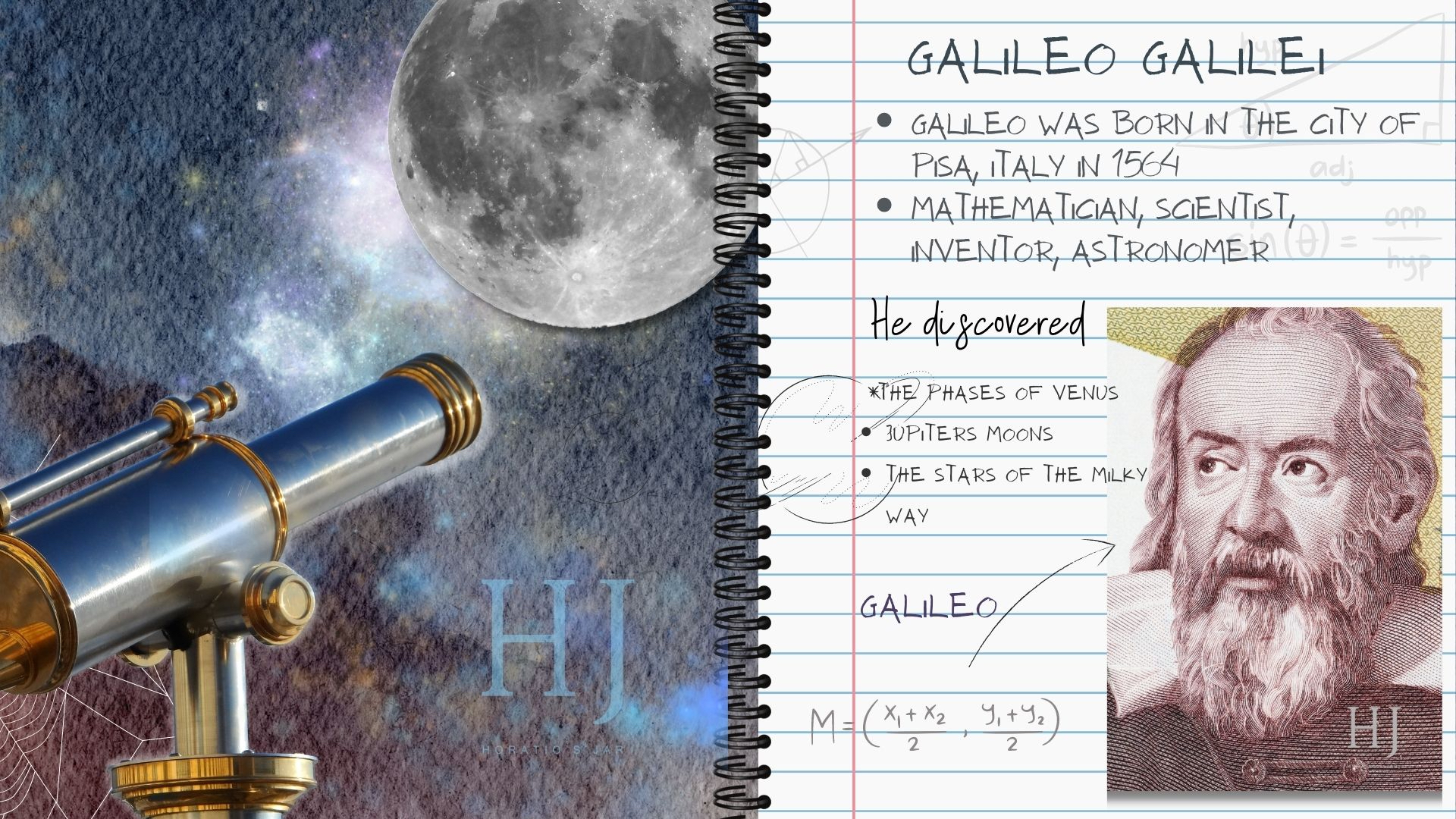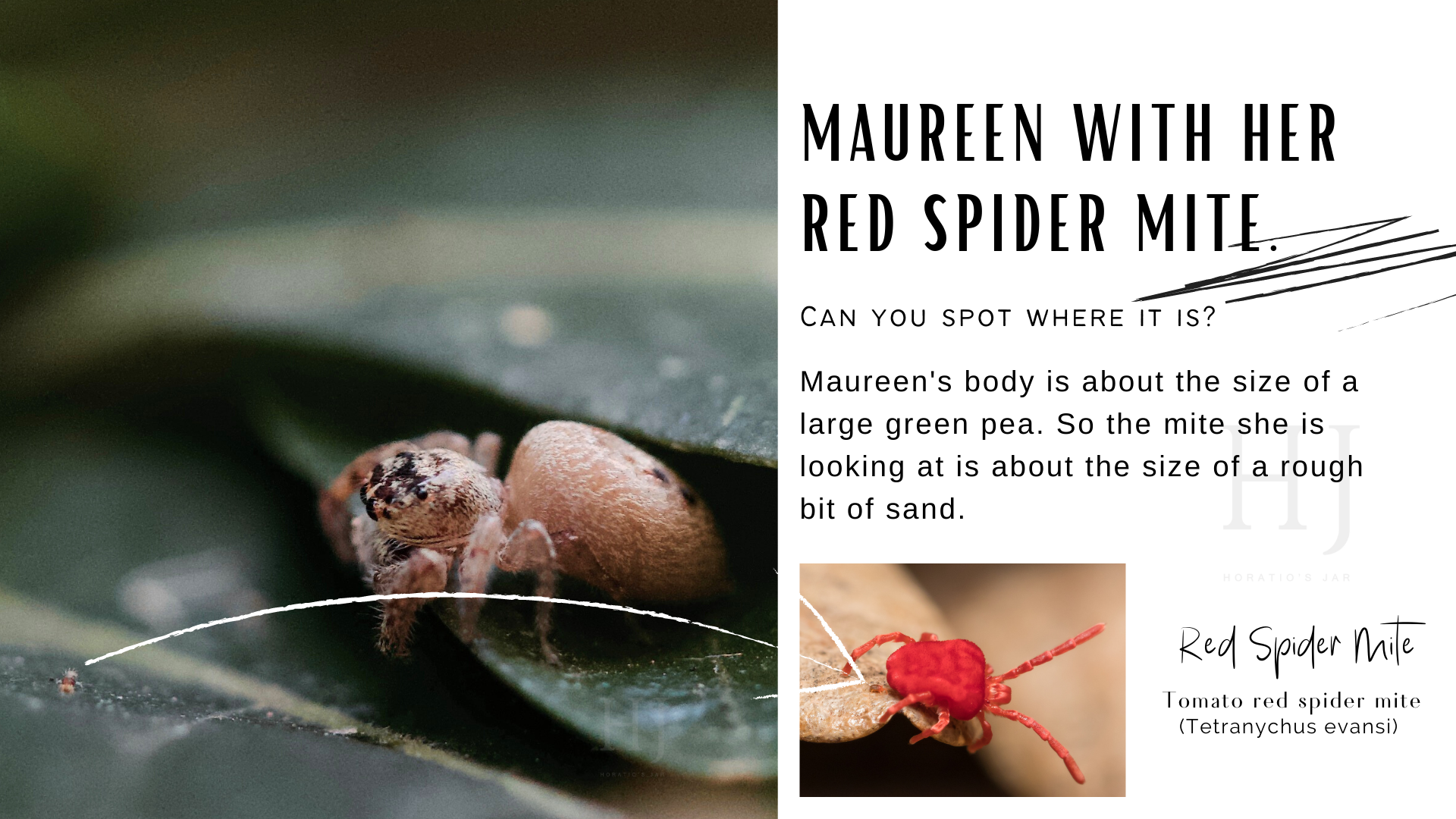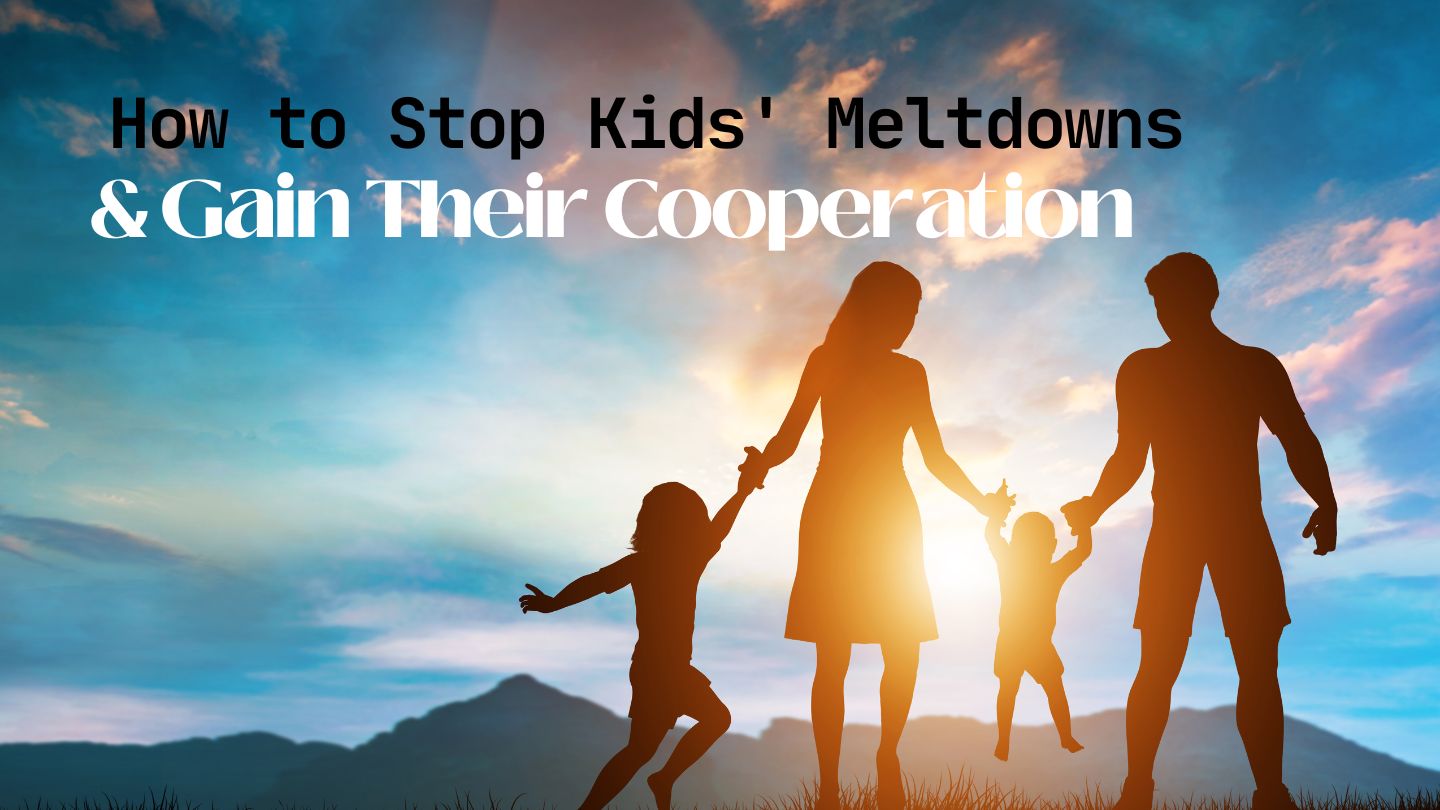Latest From Upschool
- How to Stop Kids’ Meltdowns and Gain Their Cooperation
- Making Big Decisions When You and Your Co-Parent Disagree
- Building Your Child’s Self Esteem
- Separation Anxiety & Starting School
- Why Parents Should Listen to Kids
- How To Raise Emotionally Intelligent Children
- How to Combat End of Year Fatigue
- Navigating Technology and Kids: A Guide for Parents
-
-
No videos yet!
Click on "Watch later" to put videos here
- View all videos
-
-
-
Don't miss new videos
Sign in to see updates from your favourite channels
-
Guest Contributors
Kids Corner (Guest Contributors)
Nature (Guest Contributors)
The Spider Diary, Part 3: Red Mites & Superior Sight

The Spider Diary, Part 3: Red Mites & Superior Sight
Written By Emily Rack, Horatio's Jar
 Unlike any other spider species, the Jumping spiders have a vision so advanced it is equivalent to a cat or small dog and has the same design as a Galilean telescope, a single tube with a lens on each end. Only three species of animal have this type of eye; a falcon, chameleon, and the Jumping spiders.
Jumping spider's eyes have a funnel 1 millimetre long with a lens at each end like a telescope. And just as Galileo intended his contraption to bring the night sky into view, they too can see the moon and possibly even a galaxy or two.
Unlike any other spider species, the Jumping spiders have a vision so advanced it is equivalent to a cat or small dog and has the same design as a Galilean telescope, a single tube with a lens on each end. Only three species of animal have this type of eye; a falcon, chameleon, and the Jumping spiders.
Jumping spider's eyes have a funnel 1 millimetre long with a lens at each end like a telescope. And just as Galileo intended his contraption to bring the night sky into view, they too can see the moon and possibly even a galaxy or two.


 Jumping spiders are superior to all other arachnids - and it isn't only because their eyesight is off the charts; They have measurable intelligence that has put them in a class of their own.
The jumping spider has a brain that can fit on the end of a pin, yet it can strategize, form mental images of complex landscapes, make choices, count, solve problems and interact with humans.
Behaviourally they have been compared to domestic cats and dogs and share responses to stimuli that match a human toddler. A jumping spider can experience surprise and may have emotions. Jumping spiders can also hear, which until recently was believed impossible - as spiders don't have ears.
Maureen's kind can see in colour, green is the favourite, and have been witnessed by researches watching nature documentaries.
Jumping spiders are superior to all other arachnids - and it isn't only because their eyesight is off the charts; They have measurable intelligence that has put them in a class of their own.
The jumping spider has a brain that can fit on the end of a pin, yet it can strategize, form mental images of complex landscapes, make choices, count, solve problems and interact with humans.
Behaviourally they have been compared to domestic cats and dogs and share responses to stimuli that match a human toddler. A jumping spider can experience surprise and may have emotions. Jumping spiders can also hear, which until recently was believed impossible - as spiders don't have ears.
Maureen's kind can see in colour, green is the favourite, and have been witnessed by researches watching nature documentaries.


 Like the rest of her family, Maureen is an ambassador for arthropods, arachnids, and microscopic life. Dr Seuss was onto this a long time ago when he wrote the story 'Horton's hears a Who!'.
With personalities that sparkle and shine and abilities to think, plan and learn that outclass species a million times their size, these tiny little people invite us all to question our beliefs, behaviour, and place in the world.
Like the rest of her family, Maureen is an ambassador for arthropods, arachnids, and microscopic life. Dr Seuss was onto this a long time ago when he wrote the story 'Horton's hears a Who!'.
With personalities that sparkle and shine and abilities to think, plan and learn that outclass species a million times their size, these tiny little people invite us all to question our beliefs, behaviour, and place in the world.

As for Maureen's Mites
Although spiders can get mites and parasites, these tomato red specks are not bothersome to her. Maureen doesn't eat spider mites, and I am guessing as neighbours on the same tree, it might be a circumstance they seem to follow her about. But who knows for sure? Yesterday you probably thought that all spiders function about the same: hunting, killing, eating, breeding and terrifying you from the other side of the room. Now you know that's not the case. Perhaps next time you see a spider, instead of screaming at it and trying to kill it with a broom, you might instead introduce yourself and invite them for tea? By the way, Maureen's babies have made it into the world. As I wrote the last sentence just now, a baby spider wandered across the window blind at the back of my desk. Guest Contributor: Emily Rack
Business Name: Horatio’s Jar
Publisher: Digital Schools
Emily Rack is a freelance creative writer and researcher, visual content creator, and designer. She is the head of the content production, publication - and editing for Upschool+ Guest Contributors -, and Horatio's Jar is her content production agency and wellbeing school.
Emily has dedicated her life to researching and understanding matters of the mind, body-, and the human experience. Her discoveries and research are focused on cultivating tools and dialogue that encourage us to live in peace and harmony here on earth.
Her current focus is the environment and human connectivity, conservation, environmentalism, plant medicine, botany, biology-, and the practice of 'Nature Bathing'. Emily is a writer, digital content creator, seasoned photographer-, and visual artist.
——-
PUBLISHER’S DISCLAIMER: The publisher of this blog post (Digital Schools PTY LTD) works in partnership with the school as a 3rd party provider to help build and maintain the school website. Digital Schools sources a range of experts who provide products and/or services to educational institutions and we work with them to produce and publish topical information in the form of blog posts that we think may be relevant, interesting or topical to families within the community. The views, opinions and content listed in this blog post are that of the guest contributor and/or publisher (Digital Schools). It should be noted that whilst the publisher and guest contributors are acting with the best intentions and in the best interests of the school and their community to provide helpful or interesting information, sometimes the content may not necessarily reflect the views of the school.
The information in this blog post is not meant to be used, nor should it be used, to diagnose or treat any medical condition. For diagnosis or treatment of any medical problem, consult your own physician. The school and the publisher of this blog post are not responsible for any person reading or following the information in this article who may experience adverse effects.
Any references to external websites or sources are provided for informational purposes only and do not constitute endorsement by the school or publisher in any way and the publisher and/or school cannot guarantee accuracy of information listed.
If you have feedback on any content on this platform, you can submit it to the publisher using the feedback link provided at the bottom of this page.
Guest Contributor: Emily Rack
Business Name: Horatio’s Jar
Publisher: Digital Schools
Emily Rack is a freelance creative writer and researcher, visual content creator, and designer. She is the head of the content production, publication - and editing for Upschool+ Guest Contributors -, and Horatio's Jar is her content production agency and wellbeing school.
Emily has dedicated her life to researching and understanding matters of the mind, body-, and the human experience. Her discoveries and research are focused on cultivating tools and dialogue that encourage us to live in peace and harmony here on earth.
Her current focus is the environment and human connectivity, conservation, environmentalism, plant medicine, botany, biology-, and the practice of 'Nature Bathing'. Emily is a writer, digital content creator, seasoned photographer-, and visual artist.
——-
PUBLISHER’S DISCLAIMER: The publisher of this blog post (Digital Schools PTY LTD) works in partnership with the school as a 3rd party provider to help build and maintain the school website. Digital Schools sources a range of experts who provide products and/or services to educational institutions and we work with them to produce and publish topical information in the form of blog posts that we think may be relevant, interesting or topical to families within the community. The views, opinions and content listed in this blog post are that of the guest contributor and/or publisher (Digital Schools). It should be noted that whilst the publisher and guest contributors are acting with the best intentions and in the best interests of the school and their community to provide helpful or interesting information, sometimes the content may not necessarily reflect the views of the school.
The information in this blog post is not meant to be used, nor should it be used, to diagnose or treat any medical condition. For diagnosis or treatment of any medical problem, consult your own physician. The school and the publisher of this blog post are not responsible for any person reading or following the information in this article who may experience adverse effects.
Any references to external websites or sources are provided for informational purposes only and do not constitute endorsement by the school or publisher in any way and the publisher and/or school cannot guarantee accuracy of information listed.
If you have feedback on any content on this platform, you can submit it to the publisher using the feedback link provided at the bottom of this page.TAGS
All About Animals
Natural World
NEW TO EXPLORE




